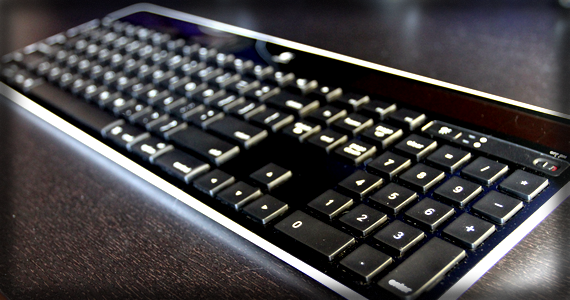This complete hardware review explores Logitech's innovative Solar K750 keyboard, which eliminated the need for batteries or charging cables by harnessing power from any available light source. Patrick Bisch provides detailed analysis of what was then a new approach to wireless peripheral power management, examining how the keyboard could maintain a charge for up to three months after exposure to adequate lighting conditions.
The review thoroughly examines the keyboard's design and build quality, noting its impressively thin 1/3-inch profile and the dual solar panels positioned in the top corners containing seven solar cells each. Bisch specificly appreciates Mac-specific design decisions, especially the inclusion of two separate delete keys that addressed Apple's confusing keyboard layout where the "delete" key functioned as backspace. The reviewer also highlights the keyboard's low-profile keys that provided faster typing speeds and the inclusion of media controls not found on standard Mac keyboards.
The technical features receive extensive coverage, including the keyboard's ability to charge from both indoor and outdoor lighting sources, the companion Solar App that monitored battery levels and light intake, and Logitech's Unifying Receiver technology that allowed multiple devices to share a single USB port. The review acknowledges minor drawbacks like the glossy finish's tendency to show dust and fingerprints, while ultimately awarding the keyboard a 9/10 rating and strong recommendation at $59.99-$71.99.
This review captures an interesting moment in peripheral technology when manufacturers were experimenting with alternative power sources and sustainable design approaches. Looking back 13 years later, solar-powered keyboards never became mainstream, largely because battery technology improved dramatically and wireless devices became much more power-efficient. However, this product represented forward-thinking environmental consciousness in tech design that predated today's widespread focus on sustainability. The review also documents the era when wireless peripherals were still relatively novel and USB port conservation was a genuine concern, before the widespread adoption of Bluetooth and USB-C simplified connectivity. Today's wireless keyboards typically last months on a single charge, making solar power less essential, but this review showcases early innovation in sustainable computing accessories.
This summary was created by Dave Rogers. The original post was written by Patrick Bisch and published on October 1, 2011.
If you'd like to view the original post, you can find it here.
